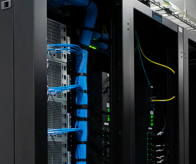
Application Delivery for Kubernetes
Secure and accelerate ingress traffic for one or multiple Kubernetes clusters.

The adoption of Application Delivery Controllers (ADCs) in Kubernetes and containerized environments mitigate the challenges often encountered in these complex environments, such as resource allocation, service reliability, and application security.
In the realm of Kubernetes and microservices, DevOps managers are always seeking effective solutions that not only enhance application delivery for Kubernetes but also reduce operational complexity. Citrix’s NetScaler, with its versatile and powerful capabilities, emerges as a robust solution that fits this bill.
Traffic Control
The NetScaler Ingress Controller extends the capabilities of the traditional Kubernetes Ingress, providing a powerful interface for managing external access to services within a Kubernetes cluster. This offers DevOps managers an invaluable asset for traffic management. Its capabilities like SSL offload, load balancing, and content switching ensure that application traffic is efficiently handled, improving application performance and reducing the load on your backend servers.
Citrix Ingress Controller watches for changes on the Kubernetes cluster and automatically configures the NetScaler to provide access to the applications deployed as microservices. IPAM delivers the IP address needed, and Citrix Ingress Controller updates the NetScaler entities (services), ensuring users can access the application without interruption.
Mesh
A service mesh is a dedicated infrastructure layer that tracks, secures, and relays all data flow between services and is usually implemented by deploying network proxies as sidecars in the data plane.
NetScaler’s integration with service mesh technologies like Istio and Envoy is a boon for microservices-based architectures. By extending its advanced traffic management and security capabilities to these service mesh technologies, NetScaler offers improved control over microservices communication, contributing to secure and efficient application delivery.
NetScaler ADC CPX/VPX and Citrix Ingress Controller helps you run a service mesh lite architecture, as NetScaler ADCs handle the east-west traffic of your application in the service mesh lite architecture and, as an L7 proxy, can provide features other proxies can’t. This gives you the benefits of service mesh, all while minimizing complexity by using fewer proxies in the deployment.
Managing API Traffic
With the growing need to effectively manage and secure API traffic, NetScaler’s function as an API gateway is critical. It supports advanced API management features like rate limiting, authentication, and authorization, enabling DevOps managers to secure API endpoints, control the traffic flow, and protect backend services from misuse or overuse.
Global Server Load Balancing
In an increasingly distributed world, NetScaler’s global server load balancing (GSLB) becomes crucial. This feature allows traffic to be distributed across multiple data centers and cloud regions, enhancing the availability and fault tolerance of your microservices. This is particularly useful for DevOps teams managing applications that need to be deployed across multiple geographic locations for high availability and performance.
Automatic Scaling
The automatic scaling capability of NetScaler is a game-changer. By integrating with the Kubernetes horizontal pod auto-scaler, NetScaler can automatically adjust the number of ADC instances based on demand. This not only helps manage the application traffic efficiently but also optimizes resource usage, contributing to significant cost savings.
Use Cases
- Load Balancing in Kubernetes Clusters: Effectively distribute traffic across multiple pods in a Kubernetes cluster, managing incoming requests and preventing any single pod from becoming a bottleneck.
- Service Discovery: Facilitate service discovery in Kubernetes environments by automatically updating the load balancer with new services or pods, improving network efficiency.
- Health Monitoring and Auto-Scaling: Monitor the health of pods and nodes, and automate scaling based on pre-defined metrics or conditions. This enables seamless scaling to meet application demands in Kubernetes deployments.
- Securing Kubernetes Applications: Provide robust security, including SSL offloading and web application firewall capabilities, for applications running in Kubernetes clusters.
- Multi-tenancy Support: In a Kubernetes environment with multiple tenants or users, an ADC can ensure isolation between tenants, preventing one tenant’s activities from impacting others.
- Traffic Shaping and Control: ADCs can help manage and control traffic flow in Kubernetes clusters, enabling rate limiting, prioritizing traffic, and managing Quality of Service (QoS).
- Kubernetes Ingress Control: Function as an Ingress controller in Kubernetes, managing external access to services in a cluster and providing advanced routing capabilities.
- Application Performance Optimization: ADCs can optimize performance for Kubernetes applications, reducing latency and ensuring a smooth user experience.
- Multi-cluster and Multi-region Deployments: For organizations deploying Kubernetes across multiple clusters or regions, an ADC can ensure consistent application delivery for Kubernetes and policy management across all environments.
- Microservices and Containerized Applications: ADCs can manage inter-service communication within Kubernetes, providing load balancing and security for microservices and containerized applications.














